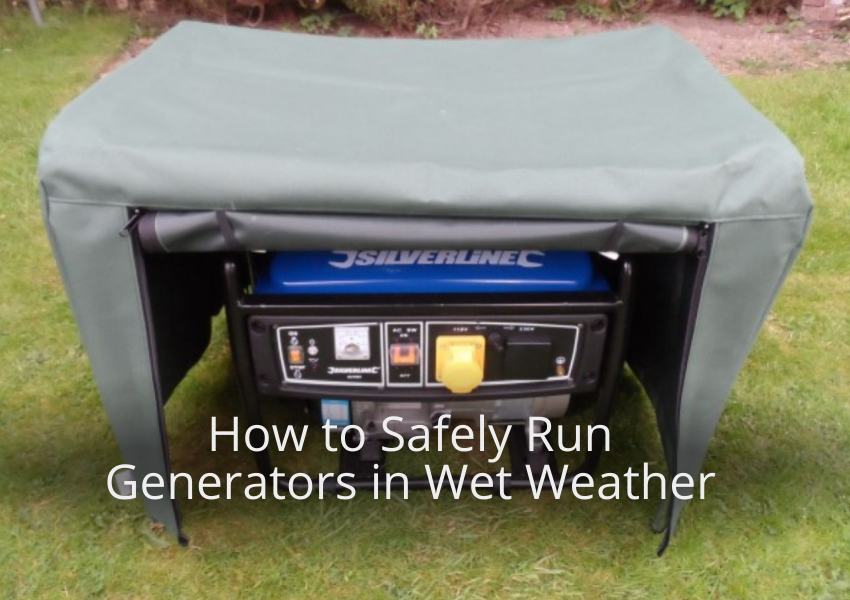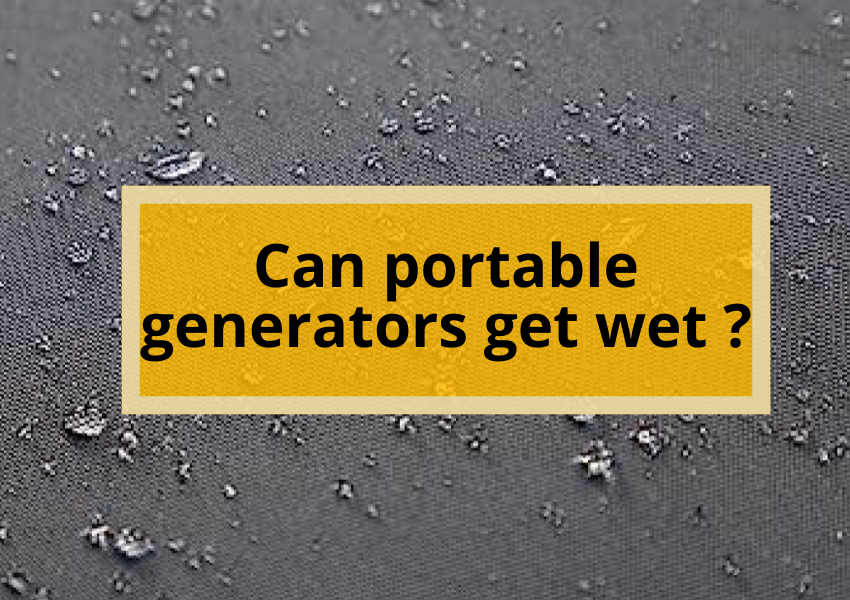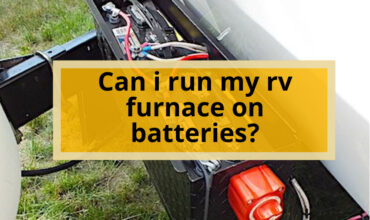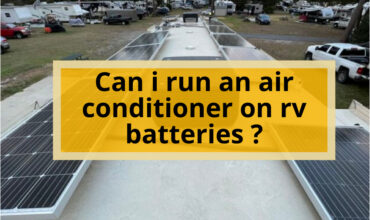Portable generators are incredibly useful tools that allow you to generate electricity on demand for various applications. However, generators that get exposed to water or wet conditions can become seriously damaged.
In this article, we’ll explore whether portable generators can get wet, what happens if they do, and most importantly, how to safely run generators in wet weather or environments to avoid issues.
Can Portable Generators Get Wet?
In short – no, generators should not get wet if possible. The key components of a generator, such as an engine, fuel system, and electronics, are not designed to withstand exposure to water. Getting a generator wet can cause issues like:
- Short circuits and blown fuses from water reaching the generator’s electrical components
- Stalling, corrosion, and degradation of the engine from water mixing with oil and fuel
- Damage to starters, alternators, and other engine parts
- Fuel leaks caused by water corrosion
- Mould and mildew buildup over time from generator dampness
Also read: Can I Run a Generator in My Garage?
What Happens if a Generator Gets Wet?
Even small amounts of moisture can damage a generator over time and cause operational problems. That’s why keeping portable generators dry is crucial for their performance and longevity.
If your portable generator does get wet, it’s not necessarily doomed. But you need to take quick action to dry it out to minimize any damage. Here are the likely consequences if a generator gets wet:
- The engine may immediately stall out or not start due to water in the fuel system or air intakes. Many generators won’t run if they detect any moisture at all.
- Short-term exposure to moisture can cause corrosion of metal components like the frame, fuel tank, and engine parts. This leads to rust and part degradation over time.
- Water can remain stuck in crevices and recesses and gradually cause electrical shorts, spark plug fouling, blown head gaskets, and other latent damage.
- Gasoline and oil soaked up by water will degrade the performance of the fuel system and engine, requiring more frequent maintenance and part replacement.
- Wetness encourages mould and mildew growth, which can clog air filters, carburettors, and engines.
The extent of damage depends on factors like how much water the generator absorbed, whether it was running while wet, and how quickly you take action after exposure. But the sooner you dry out a wet generator, the better.
Also read: Can Generators Power an Air Conditioner?
How to Safely Run Generators in Wet Weather

Generators are indispensable when storms knock out power. But with the right techniques, you can safely run a generator in wet weather or damp environments:
- Wear rubber gloves and boots when operating the generator. This will help to protect you from electrocution.
- Inspect the generator for any signs of water damage before using it. If you see any water damage, do not operate the generator until it has been repaired by a qualified technician.
- Use a surge protector to protect your appliances and devices from power surges. Power surges can be more common during wet weather.
- Be extra careful not to overload the generator. Generators are more likely to overheat in wet weather, so avoiding overloading them is important.
- Choose a generator with an enclosed, weather-resistant frame to protect the engine and electronics. Models with welded steel frames provide the most water protection.
- Operate the generator in a sheltered area under an open shelter or canopy. This prevents direct exposure to rain and moisture.
- Place the generator on a wooden platform or concrete pad to raise it above any standing water or wet ground.
- Point the exhaust away from the generator to avoid recirculating moisture into engine components.
- Ensure adequate ventilation so moisture doesn’t get trapped inside the generator housing.
- Check fuel and oil levels frequently, as water condensation can build up in tanks. Drain any accumulated water to prevent engine issues.
- Wipe down the generator periodically to dry the exterior and prevent water from seeping into crevices.
- Run the generator for 30 minutes with no load after exposure to dry out internal parts and prevent corrosion.
- Change oil and air filters more frequently when running a generator in damp conditions to prevent the buildup of contaminants.
- Store the generator in a dry, covered area when not in use to prevent moisture damage during downtime.
Following these best practices allows safe generator operation in wet environments. But it’s always wise to avoid getting portable generators wet altogether if you can.
Also read: Safely Running a Portable Generator Overnight
Protecting Generators from Water Damage
Here are some additional tips to protect your portable generator from water damage during storage and transport:
- Keep the generator covered with a tarp or weatherproof storage bag when unused. Make sure intakes and exhausts are not obstructed.
- Store the generator on concrete or non-absorbent surfaces. Avoid dirt, grass, wood, or other surfaces that can get soaked and transfer moisture.
- For transport, load and unload the generator by hand instead of ramps. Ramps can guide rain or snowmelt into the frame.
- When storing long-term, add a fuel stabilizer to prevent water condensation inside the gas tank from causing corrosion.
- Remove batteries and store them indoors to prevent terminal corrosion during storage.
- Perform frequent checks for leaks, cracks, or excessive moisture inside the generator housing that could lead to internal water damage over time.
- Ensure covers, caps, and screens are in place on intakes, exhausts, and outputs to block moisture entry points.
- Install weather seals around openings or add dielectric grease on electrical connections to repel moisture.
FAQ
What if my generator gets splashed with water?
Immediately wipe down any exterior water splashes and allow the generator to fully dry before using it again. Check for water inside the housing or fuel/oil tanks. Remove any moisture to prevent short-circuiting or corrosion.
Is it OK if my generator gets a little damp sometimes?
Occasional minor dampness probably won’t cause major issues. However, moisture will gradually degrade components over time. Take steps to keep your generator in a dry environment and have it serviced regularly to prevent premature failure.
Can I run my generator if the ground is wet?
Placing generators on a dry surface is best to avoid water seepage. Use a wooden platform or concrete pad when set up on wet ground. Ensure good ventilation underneath and point exhaust away.
What do I do if my generator won’t start after getting wet?
Don’t try to force-start a wet generator. Towel dry exterior, remove covers to access spark plugs and air filter, and let generator sit for 24 hours. If it still won’t start, take it to a repair shop to check for fuel/oil system moisture.
How do I dry out my generator after getting wet?
Wipe the exterior and cover openings to prevent further moisture. Remove covers to access spark plugs, filters, etc and dry thoroughly with towels. Let the generator sit with covers off for 1-2 days to air out, then run for 30 minutes with no load to dry internals.
Is it safe to transport my generator on a rainy/snowy day?
Avoid open transport in wet conditions. Use a protective cover or weather-resistant carrier. Hand unload rather than using ramps that can guide in moisture. Never transport a wet generator – dry it fully first.
Conclusion
Taking preventative measures minimizes water exposure that could jeopardize generator function. But if your equipment does get wet, address the situation promptly to avoid permanent damage. With smart operation and protection, portable generators can safely withstand wet environments when required.






